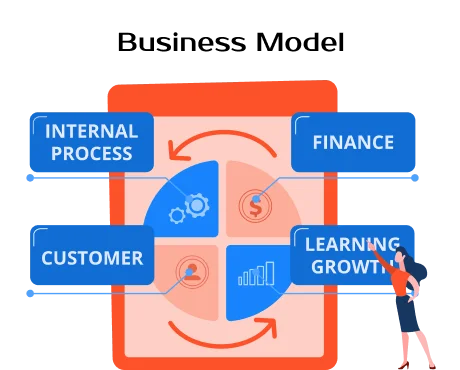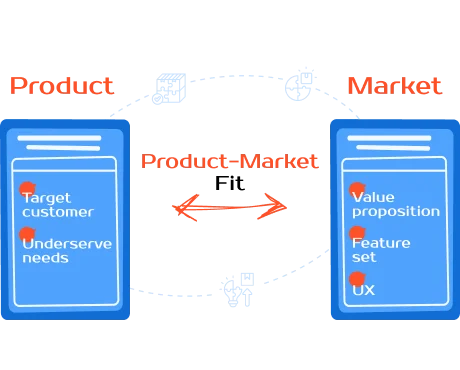Explicit and Implicit Costs: Definitions and Main Difference
Published:
July 13, 2025
costsl.webp)
In the realm of business economics, a clear distinction between explicit and implicit costs is paramount for a comprehensive understanding of a firm's financial health and true profitability. In this article, we delineate these two fundamental categories of costs, highlight their differential impact on accounting and economic profit, underscore the critical importance of their joint consideration in strategic decision-making.
Definition of Explicit Costs
Explicit costs in business are direct, out-of-pocket payments that a company makes in the course of its operations. These are actual expenses recorded in the company's financial statements.
Examples of explicit costs include:
- Rent for office or production space;
- Employee salaries and wages;
- Costs of raw materials and supplies;
- Utility payments (such as electricity and water);
- Equipment purchases or leasing fees;
- Advertising and marketing costs;
- Insurance payments;
- Taxes paid to the government.
Explicit costs are used to calculate a company’s accounting profit. They differ from implicit costs, which represent the value of resources the business already owns and uses without direct payment.
Definition of Implicit Costs
Implicit costs in business are the opportunity costs of using resources the company already owns, rather than renting, selling, or employing them for another purpose. These costs do not involve direct monetary payment and are not recorded in accounting statements, but they are important for calculating economic profit.
Examples of implicit costs include:
- The owner’s time spent managing the business instead of working elsewhere;
- Use of company-owned buildings without paying rent;
- Use of personal vehicles or equipment for business operations;
- Forgone interest from investing capital into the business rather than elsewhere;
- Use of inventory that could have been sold.
Difference Between Explicit and Implicit Costs
The key difference is that explicit costs are visible in financial flows and reports, while implicit costs exist only at the economic level. Еxplicit costs are actual cash expenditures recorded in financial statements, while implicit costs represent the lost potential benefit from alternative resource use. Both are essential for a comprehensive assessment of business performance.
Explicit costs are direct monetary payments a company makes to external parties in exchange for goods or services. These costs are clearly identifiable, recorded in the accounting system, and appear in financial statements such as the income statement.
Implicit costs, on the other hand, are opportunity costs associated with using the company’s own resources. These costs do not involve actual cash outflows and are not recorded in accounting records, but they are critical in economic analysis. For example, if a business owner uses their own time to manage operations instead of working a paid job elsewhere, the foregone salary is an implicit cost. Similarly, if the owner uses their own capital to finance the business rather than investing it elsewhere, the missed investment return represents an implicit cost.
Need help improving your business? Let’s talk
Impact on Profit Calculation
Explicit costs directly reduce a company's accounting profit. These are actual out-of-pocket expenses that are recorded in the financial statements. For example, if a company pays $5,000 per month in rent, $10,000 in salaries, and $3,000 for utilities, these costs total $18,000. If the company generates $30,000 in revenue, its accounting profit would be $12,000. This figure is useful for tax reporting and financial analysis but does not give a full picture of the business’s economic efficiency.
Implicit costs affect economic profit, which includes both explicit and opportunity costs. For instance, if the owner uses a building they personally own instead of renting it out, and the market rental value is $4,000 per month, that amount is an implicit cost. Similarly, if the owner could earn $6,000 per month working at another firm but instead works in their own business for no salary, that forgone salary is also an implicit cost.
Using the same business example, the accounting profit is $12,000. But when we include the $4,000 in lost rental income and the $6,000 in forgone salary, the economic profit becomes $2,000. This lower figure provides a more realistic view of whether the business is truly profitable when considering all resources used.
Accounting profit helps with short-term financial decisions and reporting. Economic profit, by factoring in implicit costs, is more useful for long-term strategic decisions such as whether to continue operating, invest in expansion, or allocate resources differently. Ignoring implicit costs might lead to overestimating the real profitability and sustainability of a business.
Snapshot Comparison of Explicit vs. Implicit Cost
How to Measure These Costs
- Identify and record explicit costs: track all direct monetary expenditures incurred by the business.
- Calculate the total explicit costs: sum all the direct payments made over a specific period (e.g., monthly or annually).
- Determine potential implicit costs: identify resources owned and used by the business without direct monetary payment.
- Estimate the opportunity cost of each implicit input: for each resource, determine what it could have earned in its next best alternative use.
- Calculate the total implicit costs: add all opportunity costs related to self-owned resources.
- Combine both for economic analysis: subtract both explicit and implicit costs from total revenue to find economic profit.
Why This Distinction Matters in Economics
Explicit and implicit costs are crucial in business because they reveal the full financial picture and guide smarter decisions.
Relying only on explicit costs can lead to overestimated profits and poor investments. For example, using internal labor and equipment for a new product may seem cost-effective, but if those resources could generate more value elsewhere, the project may reduce overall profitability.
Considering both types of costs enables better capital allocation, more precise investment evaluations, and stronger strategic planning. It also improves benchmarking, competitive analysis and long-term growth potential.





